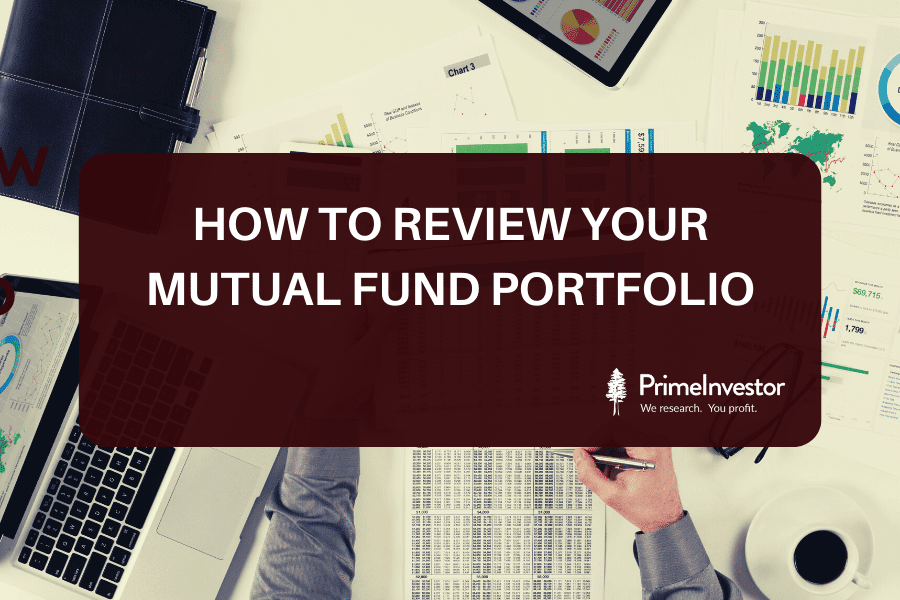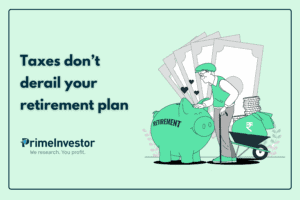This blog was originally published in November 2022. We have updated it and are republishing it for the benefit of our newer subscribers.
Of course, you review your mutual fund portfolio using our Portfolio Review Pro tool 🙂 But that done, there are many questions that you have as a follow up to using our review tool. They could be: When talking about how to review your mutual fund portfolio, some of the frequently asked questions that we receive from you are as follows:
“How to go about selling a fund – in one shot or in a staggered manner?”
“I know I have an underperformer. But should I sell it now?
I have a ‘hold’ call but the fund is underperforming. How long should I hold an underperformer?
“If I hold a mediocre fund but start SIPs in a fresh one, over time, the number of funds in my portfolio goes up. What to do?”
Let us split the response to these questions into three steps as follows:

Step 1: Frequency of review
- You can use our Portfolio Review Pro to review your funds whenever you wish. Since it also gives you your portfolio value and asset allocation, you might want to use it like a tracker as well. However, it is not necessary that you should act on the reviews immediately. In our view, it is sufficient to take action (if necessary) once a year or at best twice (if there is a urgent need to remove a fund due to regulatory or governance issues). This is especially if you have a long-term portfolio of 7-10 years or more. Also, if a large part of your portfolio consists of passive funds, then the need to do a review is even lesser. You can simply do a check for rebalancing. Read more about how to do rebalancing here.
- If you have the time and inclination and if your time frame is 3-7 years, then you can keep closer watch over the quarterly reviews we do so that you ensure you do not stay with laggards for too long, given the medium term duration of your goal.
- If your time frame is less than 3 years – honestly, there isn’t much time to course correct except when a fund turns out to be high risk (sudden credit risk event) and you need to exit it. Otherwise you can simply hold.
- Of course, if you are constantly looking at tactical opportunities (sectors, themes, high risk options, playing interest rate cycle), the field is all yours. You would have to be hands on to do this.
Step 2: Identifying under-performers and acting
Next, when it comes to identifying underperformers, our process may be different from yours, if you are not following our Portfolio Review Pro or MF Review Tool. This is why some of you ask us why we are giving a ‘sell’ on a fund that has delivered well for you or why we have a ‘hold’ on a fund that is not doing well for you. We have addressed this in brief at the end of the article.
Here are a few points you need to keep in mind when you talk about underperformers:
- First, your fund need not be an underperformer if it delivered say 5% or 6% in 2-3 years. It may be that the market too delivered the same. Not your fund’s fault.
- If your fund has been steadily behind the benchmark for 3 or more quarters (our experience tells us this is a good period) by 3-6 percentage points or more, it is underperforming.
- Next, you need to see if this is to do with the theme/strategy itself – for example, a value fund may be underperforming the Nifty 50 but it is likely that other value funds are, too. In that case, compare with peers to know if your fund is a poor one among the other underdogs. It is a different call if you choose to exit a strategy. That is more about your portfolio requirement and less to do with the performance of the fund.
- If your fund has been underperforming its benchmark and peers, your first step can be to stop SIPs. Then start the SIP in similar funds in your portfolio (if there are other funds that you hold with buy calls from our tool) or choose a better one from Prime Funds.
- If you simply stop with the above, it is likely that over a period, you will be left with an unwieldy portfolio. It is necessary for you to review such ‘hold’ funds during your next review and see if their underperformance has worsened (or simply put, have they moved to a ‘sell’ in our Portfolio Review Pro. This will be discussed more in our section on – how long to hold ‘hold funds’. And even if they remain a hold, over a period, for the sake of holding a compact portfolio, you should exit even some of the ‘hold’ funds, based on how unwieldy your portfolio is. Please note that a fund that has moved out of Prime Funds can be tracked only using the Portfolio Review Pro or our MF review tool (old style). So it is important that you use either of these tools periodically.
Step 3: Selling a fund
When a fund has been worsening in its performance in your portfolio or is a simple ‘sell’ in our Portfolio Review Pro, it essentially means you stop all SIPs and sell the fund.
Remember there is an opportunity cost in holding a bad fund. Your corpus would have been larger had you held an index in such cases. However, not every fund with a ‘sell’ call remains there. Some of them turnaround. So, you will see funds that have been long ‘Sells’ in our list sometimes moved to a ‘hold. Essentially, the opportunity loss can vary with time and the nature of the market and the funds themselves (as some do bounce back). You have to weigh this opportunity cost against the cost of taxes and exit loads.
The issues you are confronted with while wanting to sell a poor performer are broadly 2-fold: exit load and taxes. You have another dimension of how much the fund accounts for in your portfolio. Use the pointers below to deal with it:
- If your equity funds are less than a year old or you have been running SIPs on the fund in the past 12 months, then there is a high likelihood of exit load and short-term capital gains tax (if you have profits). In those cases, you MAY choose to wait to sell the entire units a year later or sell those units that have crossed a year. If tax and costs don’t bother you, you should simply sell and move to the next fund.
- If your debt funds were bought before April 1, 2023 and are more than 3 years old, then you will get indexation benefit and there is a good case to sell if the fund is not performing well. However, if the fund was bought before April 1, 2023 and less than 3 years old, you can wait for indexation benefit, provided there is no dire need (like a credit risk looming that we warn you about) to sell immediately. For debt funds that you bought after April 1, 2023, you will incur full taxation whatever be your holding period. But do remember this at all times: High risk and short residual period of holding (if your time frame is less than say 2 years) is a bad combination in debt and you cannot decide only based on taxes. The risk of capital loss from any credit event should outweigh all other reasons, to exit a fund.
- If some of you do tax planning, then you may want to set off capital gains and capital losses and time your redemptions accordingly (subject to the above risk in debt funds). This is best done consulting your tax consultant/auditor unless you are well-versed in this.
- If you have an extremely high proportion of holding (say over 25%) in a single fund, you usually hesitate to do a single shift at a time. Now, technically, when you simply move from one equity fund to another, there is no element of market timing (unless you are out of the market and re-enter after some time) and hence no cause for worry. However, incurring large taxes in one shot may bother you. In such cases, phased exits will help. Otherwise, this is not something that calls for a SIP or STP simply because you continue to remain invested in the same asset class – just that it is another fund now.
- If your holding in the underperforming fund is small, then you should not bother about all the above and simply exit.
Step 4: Deciding on the ‘hold’ funds
We stated earlier that you simply stop SIPs in your ‘hold’ funds and wait. Note that if a fund remains a middle order performer and is not terrible, there is no cause to really sell it. However, if you keep doing this over a 15-20-year period, the number of funds in your portfolio will likely swell. In such cases, use the following pointers to exit some of your ‘hold’ funds.
- When you are rebalancing and you have multiple funds from the same category or style, exit or reduce the ‘hold’ ones first, if there are no ‘sells’.
- When you do your annual review and the number of funds you have is unwieldy (read our article on how many funds to hold) then exit some of the ‘holds’.
- Reinvest in like-funds in your portfolio or if there are none, the nearest fund in terms of risk profile. For example, if you had a large & midcap fund and you would rather exit it to consolidate, you can well consider a multicap fund in your portfolio to shift into. Else, split it between a flexicap and midcap fund that you already hold to achieve similar risk profile.
- When you need some money for emergencies and need to necessarily draw from your long-term portfolio, the ‘sell’ and ‘hold’ funds can be your first choice. Many of you use the argument that you will book profit in the performing fund first. But you need to remember that MFs are not stocks. A stock that has gone up becomes expensive. A mutual fund that has returned well, may continue to return well as it rejigs its portfolio to find newer opportunities. Track record of consistent performance is more important. The exception to this is sector/theme funds.
- And of course, if all the funds that you hold are of top quality, then you can always reduce the risky funds (mid and small cap) when you rebalance. But we are talking of ‘hold’ calls here and not about how to rebalance.
Why the fund that delivered for you may be a ‘sell’
Some of you write to us asking why we have a sell call on a fund that appears to have returned well for you.
We use a combination of quantitative metrics (used in our rating) and qualitative and forward-looking factors and sometimes internal debates to arrive at a buy/hold/sell. Our methodology is roughly an 80:20 approach – process driven: qualitative.
Many of you tend to look at a single metric to decide whether your fund is performing well or not. And when you use our review tool and it does not sync with your own call, we get the following 2 frequently asked questions :
- why we have a sell on your fund when it has returned well for you
- why we have a ‘hold’ on a fund that is underperforming for you.
So, here’s the answer: A fund that you have held for long may have delivered great returns for you and may be underperforming in recent years; it may not show up for you. Similarly, a debt fund with very high risk may be a hold or sell in our tool and may have still returned for you (since no credit event may have hit it until then). Conversely, a fund that is just turning around may not show up in your portfolio performance but signal us clearly in our research. These may have moved from a sell to a hold or from a hold to even a buy.
Suffice to say that we assess the fund’s performance on its own merit and not based on how it performed in your portfolio. In other words, our call in on the fund at present, when compared to peers. That it may have delivered well for you is a matter of timing and of also being oblivious to risks that haven’t shown up yet in your portfolio.
To sum up, when you review your mutual fund portfolio, it is important that you weed out underperformers and over time also reduce too many funds that you may have on ‘hold’ .
For those of you new to our platform, we would like you to know that there are 4 layers of researched products we offer as far as mutual funds (which is just one of our offerings) go:
- One, Portfolio Review Pro – which will help you review your holdings across various platforms and for multiple PANs, separately or together. You will not only know whether you hold good funds but also your asset allocation risk and whether the cost you incur (expense ratio) is high or moderate.
- Two, Prime Ratings – our in-house MF rating tool. This tells you where your funds stand vis-à-vis their peers. As a subscriber, you will also see our Buy/hold/Sell calls on the funds. Do note that the Rating is not a call by itself.
- Three, MF review tool – is one of the components of our Portfolio Review Pro – where you can know our call on funds that you may not hold. While our call is also available in Prime Ratings, this tool will give the rationale for our call on each fund. We use our Prime Ratings as a base and apply further quantitative and qualitative (portfolio) filters on our Ratings to arrive at this. Hence, our MF Ratings and MF Review tool are not the same.
- Four, Prime Funds – our list of recommended funds – both active and passive – that ensures there is variety in fund strategy and the risks do not overweigh return potential. These funds are bucketed in terms of risk in the case of equity and time frame in the case of debt.
- Five, Prime Portfolios – our readymade portfolios built for a range of goals and timeframes that use mutual funds, ETFs, deposits and other schemes.
- Six, Build your own Portfolio – a tool that allows you to customise and build a new portfolio from scratch, based on your time frame and goal.
Our reviews of Prime Funds, Prime portfolios, Ratings and Calls are done on quarterly basis. So while using our platform, it is necessary you visit the website not only for the reports and articles we write but to use the tools and recommendations and ensure you manage your portfolio optimally.







4 thoughts on “How to review your mutual fund portfolio”
Thanks for the wonderful article.
I have a related question: While analyzing our MF portfolio, I understand looking at returns from individual schemes and deciding on hold/sell. But, is there any value in looking at the overall (lifetime) portfolio investment Vs returns?
For example, when I look at my overall portfolio (all money invested over x years Vs current value), I get a certain percentage returns. But, I am not able to understand whether it is good or bad. Mainly because, out of that portfolio value, some was invested 15 years back, some was invested 1 year back and some was invested yesterday. So, this number seems to have an inherent imbalance.
However, I also want to attach some value to it because that’s ultimately what I gained by MF investments over many years and I want to know overall whether I am doing good or bad (in other words, was MF investment over many years really worth it?). Not sure if this metrics helps me see that/any other metric can.
Please share your thoughts on this when you have time. Thank you.
hello Sir,
Thanks. I missed this comment earlier. Sorry about that. In general, we attend to tickets (contact@…) first and then blog. So kindly write to us for anything that needs attention soon.
1. The buy/hold/sell is a review of the products (schemes in your portfolio). The objective is that if you stay with good schemes, the portfolio returns will improve.
2. Scheme-wise IRR and Portfolio XIRR (very few platforms do that unfortunately) will help you compare the annualised returns and hence is a good measure of your portfolio performance (not exactly but somewhat that, if you have already read the links Srikanth shared).
3. Now coming to your question, the ONLY WAY to gauge portfolio returns with market is to mimic your portfolio investment. That is – as if you you use indices (equity, debt gold) to invest exactly on the date you invested right through and then look at its IRR. This is the only way to gauge the correct performance. But since this is difficult and most advisors/platforms seldom do it, the quickfix is to do a rough calculation how much the market returned over your 15 year holding period (with weight allocated to equity, debt gold, roughly in your proportion) and then compare it with your portfolio returns (XIRR). This is of course writ with anomalies since time value of money invested in multiple tranches is not considered. it is simply a CAGR but it can still be a rough benchmark.
Vidya
Thank you so much for such wonderful article. It has given me lot of clarity about building and reviewing the portfolio.
I would request you to kindly cover asset allocation strategies for different sizes of portfolio. I would like to have a deeper understanding about how to allocate funds to different asset classes and review them as all the asset classes don’t perform at the same time.
Super!
Comments are closed.